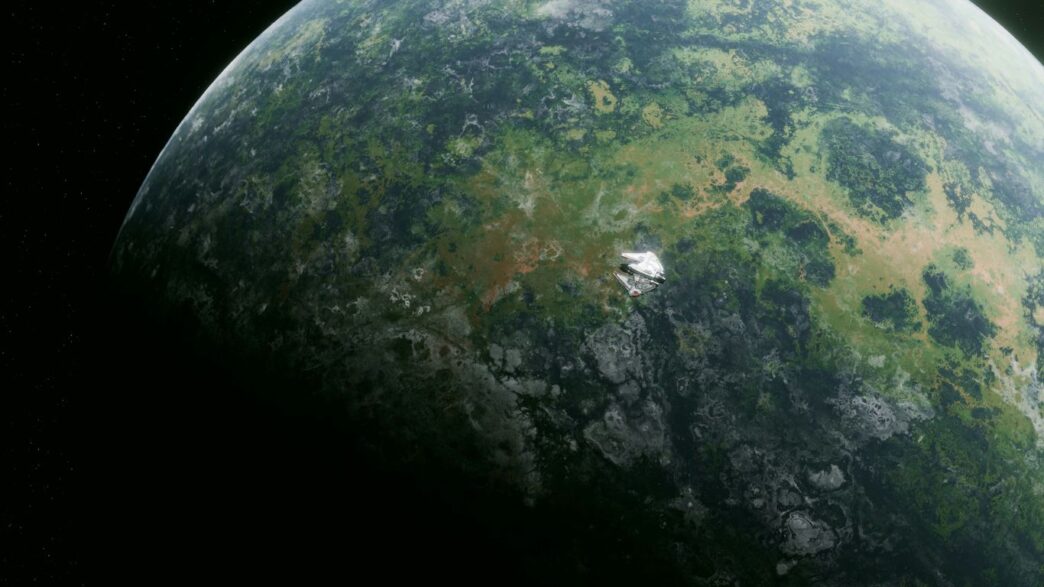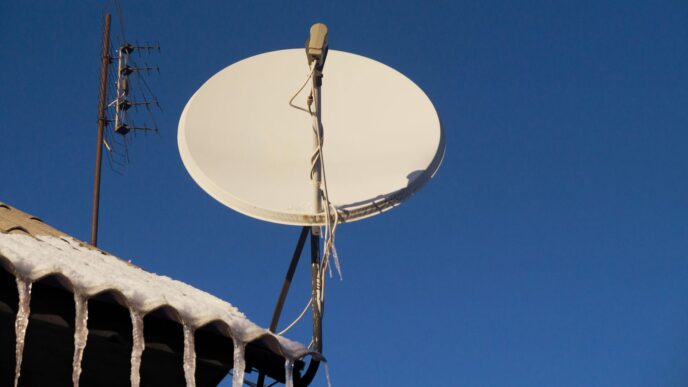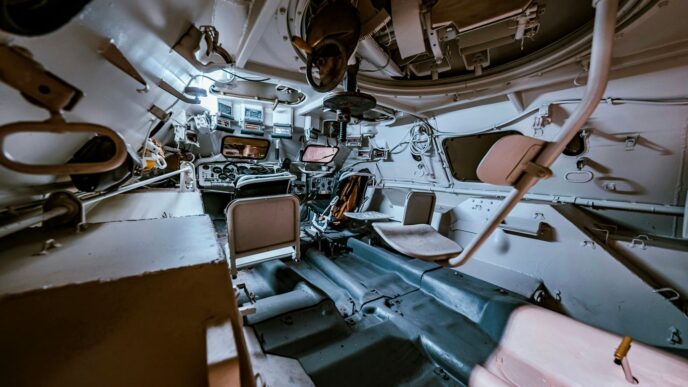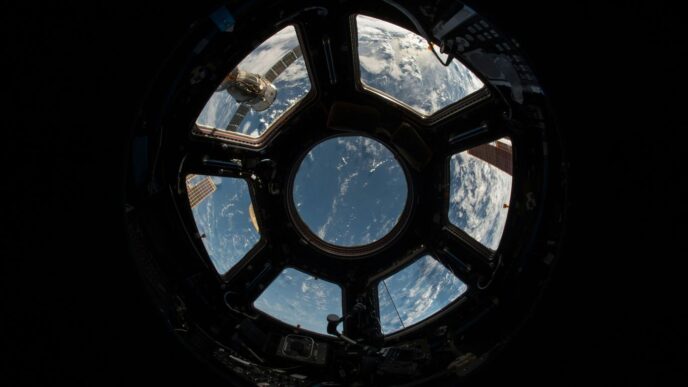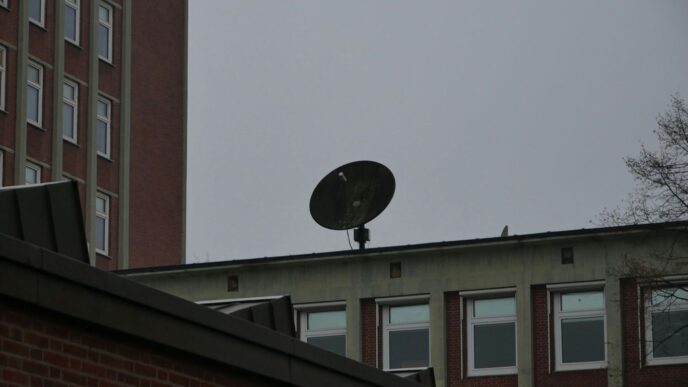China’s Advancing BeiDou Navigation Satellite System
China’s BeiDou Navigation Satellite System, often just called BDS, has really come into its own. It’s not just a backup anymore; it’s a fully functioning global system that competes with the likes of GPS. Think of it as China’s answer to global positioning, and it’s been steadily growing its capabilities.
Global Positioning and Communication Services
BeiDou’s big achievement was completing its BDS-3 network. This system uses a constellation of satellites to provide positioning, navigation, and timing (PNT) services all over the world. It’s pretty impressive, offering more than just basic location tracking. You can get short-message communication, even global search and rescue services. It also has features like precise point positioning, which is important for things needing really accurate location data. This global reach means BeiDou can be used for everything from tracking your phone to guiding large ships.
BeiDou’s Role in the Belt and Road Initiative
The Belt and Road Initiative (BRI) is a massive global development strategy, and BeiDou plays a part in it. China sees BeiDou as a way to offer its technology and services to countries involved in the BRI. This helps build infrastructure and connect regions, and BeiDou provides the navigation and timing backbone for many of these projects. It’s also seen as a way to reduce reliance on other countries’ navigation systems, promoting a kind of technological independence for participating nations. Imagine construction projects, logistics, and transportation all relying on BeiDou across different continents.
Next-Generation BeiDou Development
China isn’t resting on its laurels with the current BeiDou system. They’re already looking ahead to what’s next. The focus is on making the system even more integrated and smarter. This includes research into combining navigation and communication technologies, which could lead to new ways of using satellites. They’re also exploring things like low-orbit augmentation to improve accuracy and responsiveness. The goal is to create a national PNT system that’s more extensive, more connected, and more intelligent than ever before, ready for future technological demands.
Earth Observation Capabilities of China’s Satellites
China’s got some pretty impressive eyes in the sky these days, and they’re not just for looking at stars. These satellites are busy watching our planet, giving us a much clearer picture of what’s going on.
Ocean and Atmospheric Monitoring
When it comes to our oceans, China’s Haiyang satellites, like the Haiyang-1C/1D and Haiyang-2B/2C/2D, are constantly scanning the waters. They’re keeping tabs on things like sea surface temperature and ocean currents across the globe. It’s like having a constant, high-resolution view of the big blue. Then there are the Fengyun meteorological satellites. The Fengyun-4A/4B, sitting way up in geostationary orbit, are always on duty, watching the atmosphere non-stop. They can track weather patterns and even spot developing storms with great accuracy. The Fengyun-3D/3E satellites add another layer, monitoring the atmosphere at different times of the day, which helps build a more complete weather picture. Even the Fengyun-2H satellite plays a role, providing weather updates for countries involved in the Belt and Road Initiative.
Disaster Monitoring and Emergency Response
These Earth observation satellites aren’t just for routine checks; they’re also a big help when disaster strikes. Think about floods, earthquakes, or typhoons. China’s satellites can provide quick, detailed images of affected areas. This information is super useful for emergency responders trying to figure out the best way to help. For example, China has offered monitoring services following events like the dam collapse in Laos and a cyclone in Mozambique. They’ve also been working on improving their ground systems so they can receive and process satellite data faster, which is key when every minute counts during a crisis.
International Earth Observation Cooperation
China isn’t keeping all this satellite know-how to itself. They’re actively involved in international efforts to observe our planet. They played a big part in the Group on Earth Observations (GEO) and are part of platforms like the Space Climate Observatory. This means they’re sharing data and working with other countries to tackle big issues like climate change. They’ve even partnered on specific satellite projects, like the China-Italy Electromagnetic Monitoring Experiment Satellite. It shows they’re serious about using space technology for global good and working together on these important challenges.
China’s Satellite Communications and Broadcasting Network
China’s been busy building out its satellite communication and broadcasting capabilities, and it’s really starting to pay off. They’ve got a pretty solid network now that’s reaching more places and can handle a lot more data than before. Think about keeping TV and radio signals stable across the country – satellites like Zhongxing-6C and Zhongxing-9B are key for that, making sure folks don’t lose their favorite channels.
High-Capacity Satellite Services
Things are getting serious with the new high-capacity satellites. We’re talking about satellites like Zhongxing-16 and APSTAR-6D, each capable of handling a massive 50Gbps. This isn’t just about more channels; it means faster data, better connections for businesses, and the groundwork for all sorts of new internet services beamed down from space. It’s a big step up from what we had even a few years ago.
Mobile Communications and Broadcasting Expansion
It’s not just about fixed services anymore. China’s also expanding its mobile satellite network. With satellites like Tiantong-1 02 and 03 working alongside the original Tiantong-1 01, they’re providing voice, text, and data services. This is super important for areas that don’t have good ground-based cell service, reaching users in China, nearby regions, and even parts of the Asia-Pacific. They’re also upgrading their relay satellite systems, like with the Tianlian-1 05 and Tianlian-2 01, which helps boost the overall capacity and reliability of these space-based communication links.
Integrated Space-Ground Communication Systems
What’s really interesting is how they’re tying everything together. They’ve improved the ground systems for their satellites, creating a network that combines space and ground communication. This integrated system isn’t just for broadcasting and phone calls; it’s also being used for internet services and the Internet of Things (IoT). Basically, they’re building a comprehensive communication infrastructure that uses satellites to connect the world, or at least a big chunk of it.
International Collaboration in China’s Space Program
China’s space program isn’t just about what they can do on their own; they’re also really getting out there and working with other countries. It’s not just about building rockets and satellites in isolation. They’ve been signing a bunch of agreements, actually. Since 2016, they’ve inked deals with 19 different countries and regions, plus a few international groups. It’s all part of a bigger push to figure out how everyone can use space responsibly and safely.
Global Navigation Satellite System Partnerships
When it comes to navigation, China is actively involved in global discussions. They’re part of the UN’s International Committee on Global Navigation Satellite Systems, which sounds like a mouthful, but it’s basically about making sure satellite navigation systems play nice with each other. They want to improve how systems like BeiDou work together with others, making things more compatible. They’re also sharing what they’ve learned about using BeiDou, hoping it helps other countries develop their own economies.
Joint Lunar and Deep-Space Exploration Missions
Looking beyond Earth, China is keen on exploring the moon and deep space with international partners. They’re working on an international lunar research station project and are pretty open about inviting other countries to join in at any stage. This isn’t just a solo mission; it’s an invitation to collaborate on understanding our solar system better, including things like asteroids and other planets. They’ve even made data from missions like Chang’e 4 available to the world, which is a pretty big deal for scientists everywhere.
Collaborative Satellite Engineering Projects
China is also teaming up on building satellites. They’ve worked on projects like the MisrSat-2 with Egypt and are involved in the SVOM mission with France and the China-Italy Electromagnetic Monitoring Experiment Satellite 02. They’re also continuing work on Earth resource satellites with Brazil. It’s not just about the big, flashy missions; it’s also about sharing the technical know-how for building the actual hardware, from whole satellites down to individual parts. They’re even looking at supporting international commercial spaceflight, which could mean joint launching services and technical help for companies around the world.
Dual-Use Technologies in China’s Satellite Development
It’s pretty interesting how China’s satellite tech is growing, and a big part of that is how they’re using what they call ‘dual-use’ technologies. Basically, this means a lot of their satellites aren’t just for one thing, like just for weather or just for navigation. They can be used for civilian stuff, but also for military purposes. This whole idea is tied into their ‘civil-military fusion’ strategy, which kind of blends the lines between what’s for the public and what’s for defense. It makes it a bit tricky for other countries to figure out exactly what a satellite is doing.
Civil-Military Fusion in Space Applications
This fusion is a pretty big deal. Think about it: a satellite that helps farmers track crops could also be used to monitor troop movements. Or a navigation system, like BeiDou, which is great for getting directions, can also help guide military vehicles with super precise timing. China has been launching a lot of satellites, and many of them are designed with this flexibility in mind. It’s like building a tool that can do many jobs, and some of those jobs are definitely more sensitive than others.
Surveillance and Intelligence Gathering Capabilities
When we talk about surveillance, China’s Earth observation satellites are really stepping up. They’ve got a growing number of these satellites in orbit, and they’re packed with sensors. These sensors can apparently spot and track things like ships, which is obviously useful for military planning. Some of these launches have even involved international partners, but experts suggest the satellites have capabilities that go beyond just scientific observation. It’s a way to gather information about what’s happening on the ground and at sea, both for civilian needs and for national security.
Geopolitical Outreach Through Space Assets
Beyond just gathering information, China is also using its space program to build relationships and influence globally. They’ve signed agreements with many countries to work together on space projects. Some of these collaborations even touch on these dual-use technologies. It’s not just about scientific discovery or helping out with disasters; it’s also about projecting power and influence. Missions like the Tianwen-2 asteroid sample-return mission, for example, show a mix of scientific ambition and a desire to have a strategic presence in space. It’s a way to show their capabilities and build partnerships, all while advancing their own interests.
Future Directions in China’s Satellite Technology
So, what’s next for China’s satellite tech? It’s a pretty exciting area, honestly. They’re not just resting on their laurels with BeiDou and Earth observation. The big push seems to be towards making everything smarter and more connected.
Enhanced Spatial Information Services
Think about getting more detailed and useful information from space. This means better maps, more precise location data, and services that can help with all sorts of things, from farming to city planning. They’re looking at ways to make these services more accessible to everyone, not just big organizations. This drive towards widespread, high-quality spatial data is a major theme. It’s about making space technology a regular part of daily life and business.
Development of New Satellite Constellations
We’re seeing a lot of talk about new groups of satellites, or constellations. These aren’t just for navigation anymore. They’re building massive networks for internet access, communication, and even specialized monitoring. Some of these are designed to cover the whole planet, offering services where they weren’t available before. It’s a huge undertaking, involving thousands of satellites.
Here’s a look at some of the planned constellations:
- Spacesail Constellation: Aiming for worldwide internet service, supporting sectors like transport and smart cities.
- Thousand Sails (Guowang): A megaconstellation with a goal of 14,000 satellites for global communication.
- G60 Constellation: Another significant constellation with a target of 648 satellites.
Integration with Emerging Technologies
This is where things get really interesting. China is looking at how to combine its satellite capabilities with other new technologies. We’re talking about things like artificial intelligence, advanced data processing, and even new ways to keep satellites running and maintained in orbit. They’re even experimenting with cleaning up space junk. It’s all about making space systems more capable, reliable, and sustainable for the long haul.
Looking Ahead
So, it’s pretty clear China isn’t slowing down when it comes to space tech. From making sure we can all find our way with BeiDou to keeping an eye on our planet with advanced Earth observation satellites, they’re really pushing forward. They’re not just building these systems for themselves, either; they’re working with other countries, sharing data, and even helping out with disaster relief. It looks like space is going to play an even bigger role in how things work down here on Earth, and China is definitely a major player in making that happen.


